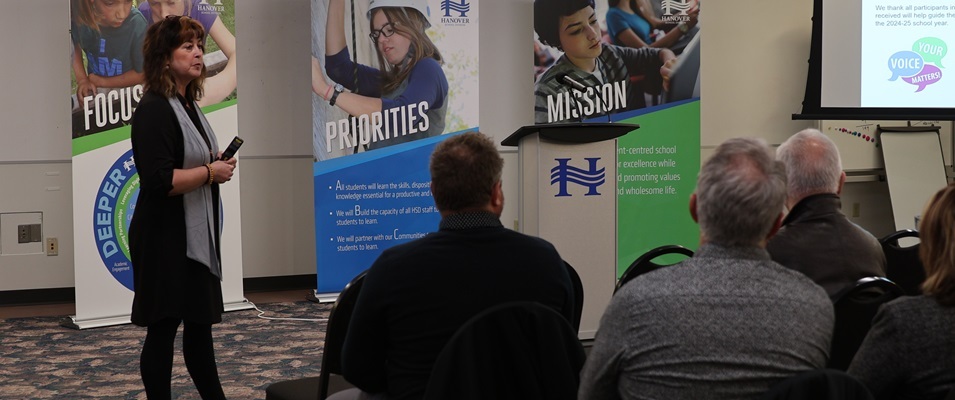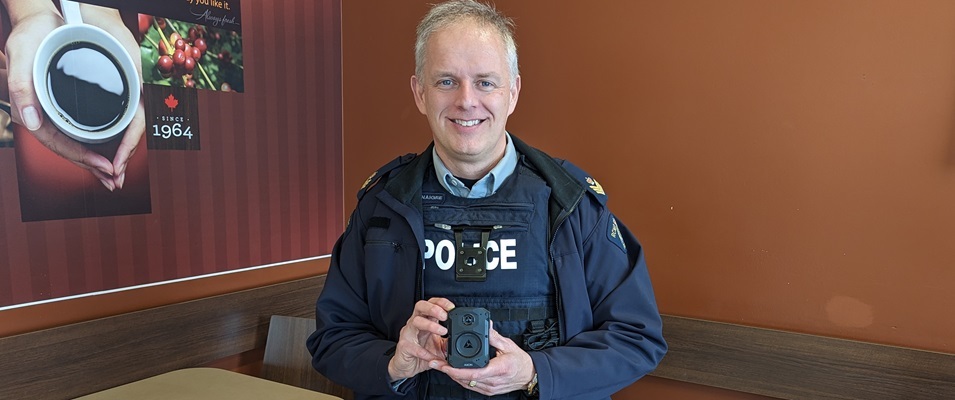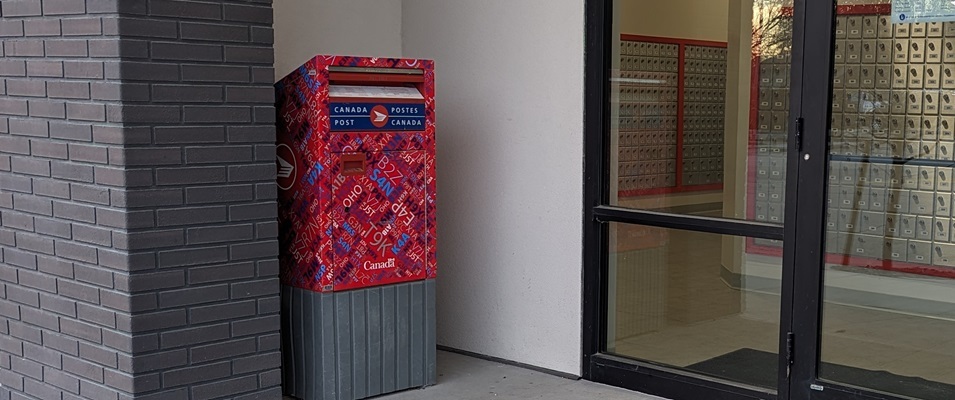
The Hanover School Division’s (HSD) meeting room was full to capacity on February 6 as stakeholders of all stripes came to participate in a public consultation regarding the 2024–25 divisional budget.
The hope of the trustee board was to gain feedback as they launch into budget planning sessions over the coming weeks.
Following the provincial funding announcement on February 1, trustee boards can now get to work allocating their available funds. As well, divisions will once again be at liberty to increase school mill rates, which hasn’t been an option available to them over the past few years.
Including $575,000 in funds designated specifically for nutritional programming, HSD will be receiving almost $65 million in provincial funding this year. That is up by $4.6 million over last year, or 7.1 percent.
Based on the 2022–23 school year, provincial funding was covering 69 percent of HSD’s operational budget. The provincial average at the time was just under 58 percent.
Trustee chairperson Ron Falk says that HSD receives a little more from the province than some other divisions due to Hanover’s generally smaller taxbase.
“You would think that we’re a very well-to-do region, and I think we are, but we don’t have a lot of industry like some areas in Winnipeg,” Falk said. “So our tax base is actually a little on the lower side. And because we can’t raise enough money locally, the province gives us additional funds.”
Also making things more financially challenging is the fact that Hanover has a higher than normal number of average students per household. Thus, the school tax collected from one household must stretch farther.
“We have more children per family [in Hanover],” says Falk. “Some divisions might have an [overall] assessment that’s high, but they have fewer children, so [the taxes] go a lot further that way.”
Currently, Hanover’s school mill rate seems relatively healthy at 12 percent, compared to the provincial average of 11.7 percent.
But when you consider the larger family sizes in the region, the property assessment per pupil in Hanover comes to only $293,000. This is well below the provincial average of almost $489,000. The division with the highest assessment per pupil in the province sits at more than $1 million.
Since the PC government first began removing taxation authority from school boards, most divisions in the province have needed to implement significant austerity measures.
In the 2023–24 budget, HSD was required to cut almost $2.7 million from their annual operating costs. This resulted in the layoff of 10.5 teacher positions and major reductions in purchases and programming.
By the end of this school year, the HSD board is projecting a balance of just over $1 million remaining in their reserve funds. To be on par with province’s recommendation of a four percent reserve, another $2 million is needed.
“The division will strive to reduce some of those lost services,” Falk said. “We’re in an area where assessment growth is very positive… and the government is saying we can tax for that now.”
Even so, Falk is confident that the board won’t choose to try and recover all the losses in the first year.
One attendee to the meeting challenged Falk and the trustee board to reconsider the emphasis that they’ve placed for years on keeping the cost-per-student spending below the provincial average.
“I’m wondering if the board has ever entertained the notion of doing an audit on what it is that we’re not providing [our students] that other schools are providing,” he said. “I’ve heard you say over the years… that we do more with less. But I have been wondering recently what we would do if we [could do] more with more. How much more support could we provide for EAL kids… for kids who have learning difficulties… for kids who are really struggling with mental health?”
Falk responded, indicating that raising the divisional tax rates will be a balancing act. Just that day, he said, he’d received an email from one local taxpayer who was very concerned that school taxes would be going up in light of the government’s new legislation.
“It’s something that the board is going to have to look at,” Falk replied. “If we decide to go with a tax increase, what is our comfort level? I think it’s safe to say, though, that not having a tax increase is not going to work. That’s been shown very clearly in the last three to four years and there’s no dollars left in [our] tank.”
Apart from budget talk, Falk also addressed the provincial government’s priority to bring down the early years class sizes to a 20-to-1 student to teacher ratio in the coming years.
At this stage, the government has set aside $300,000 for the hiring of additional teachers to make this happen.
According to Falk, though, it will barely make a dent. Considering the average teacher makes around $100,000 per year, the funding would provide only one new teacher position for 30 out of Manitoba’s 37 school divisions.
“It’s not a huge difference,” said Falk. “It’s a step in the right direction, but you’re not going to see massive decreases in class sizes.”
Even so, another attendee, a teacher in HSD, indicated a hope that the board would make a conscientious effort to restaff all the HSD schools with the adequate number of teachers next year.
“The effect [of teacher cutbacks] was a rise in the teacher to student ratio by two students in almost every grade level across the division,” they said. “Will you plan this budget to hire the 25 teachers necessary to catch up plus the additional teachers to meet this year’s anticipated growth?”
At this early stage, Falk said, he could only anticipate that teachers would rank highly on the board’s priority list.



















